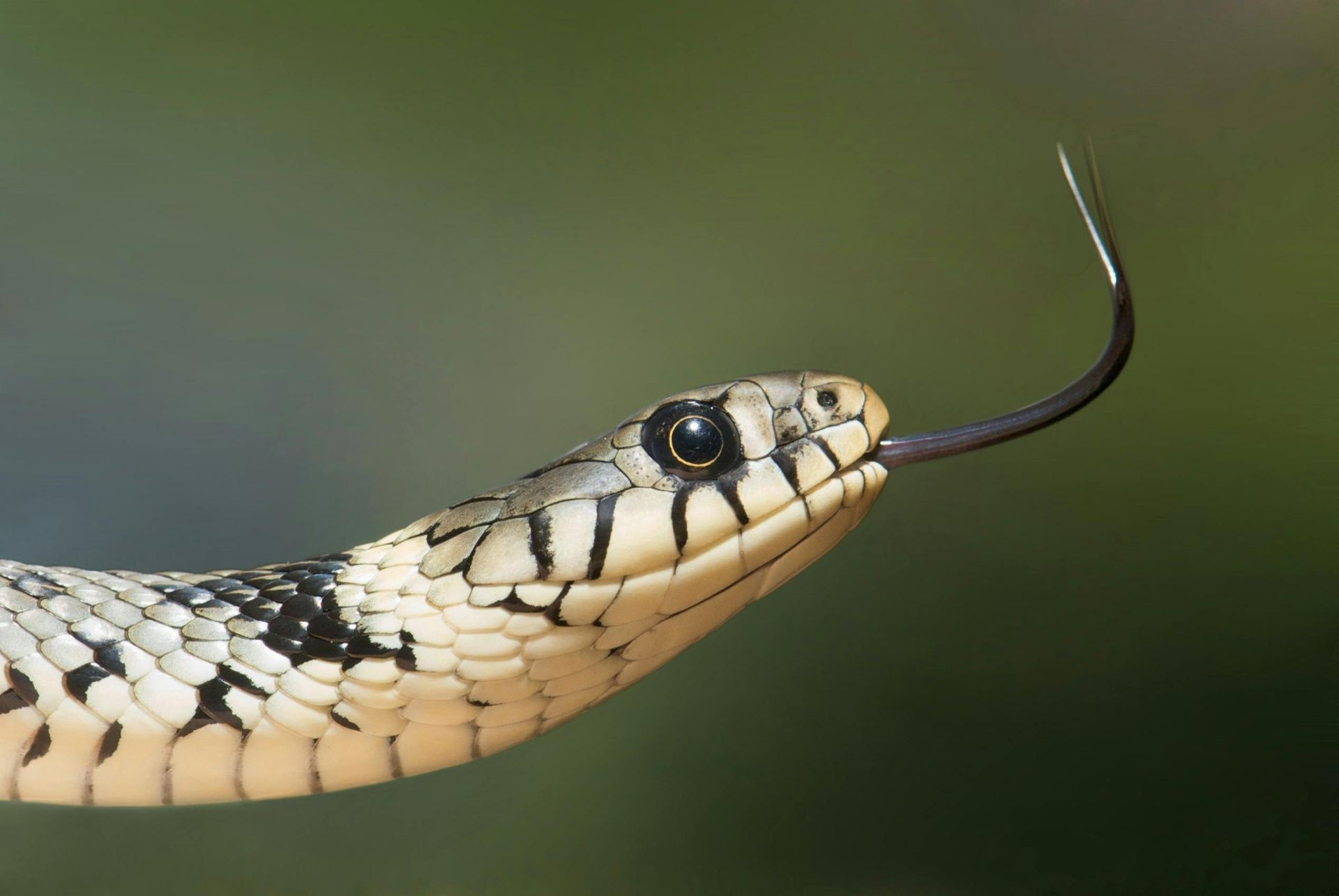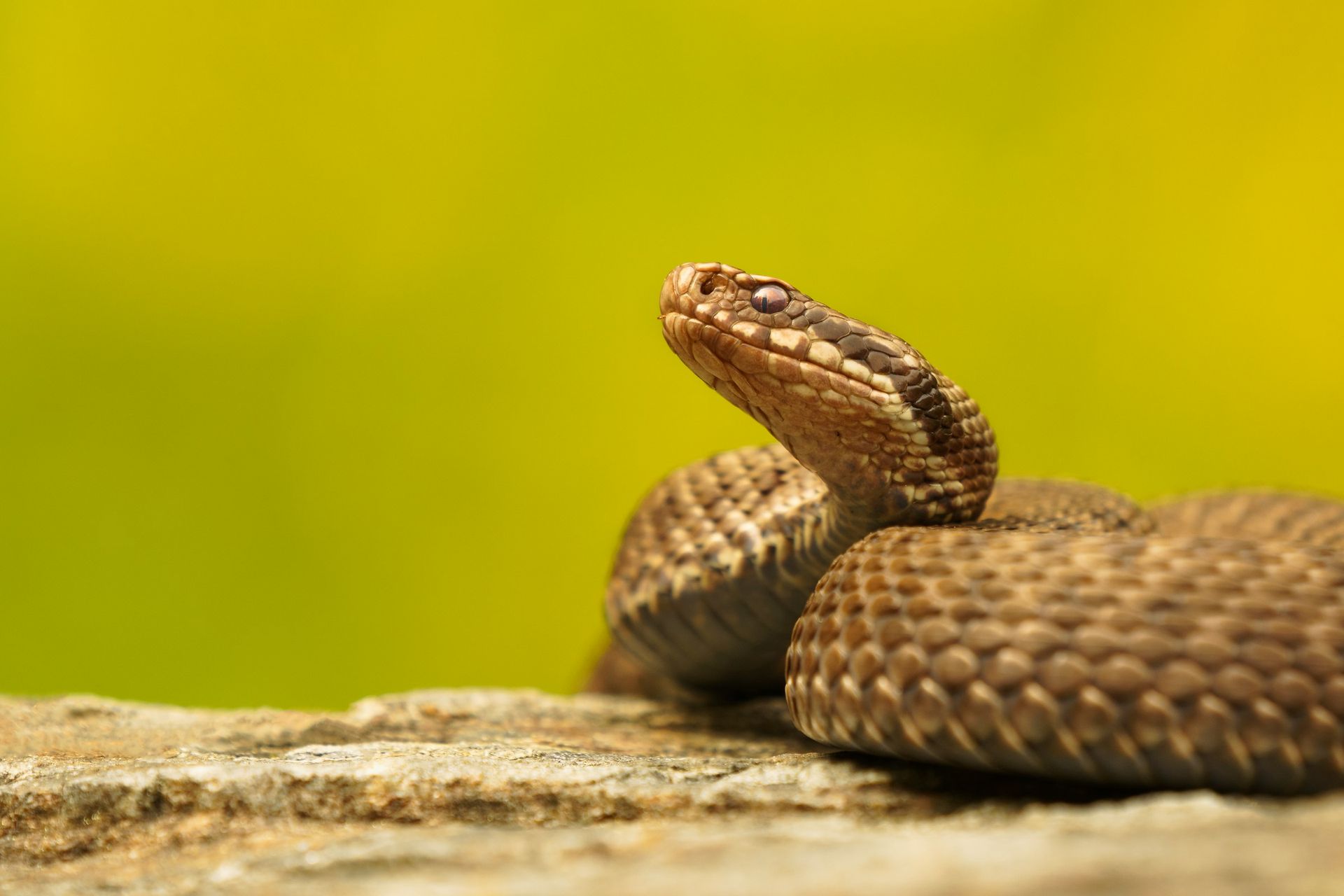Snakes are highly adaptable reptiles found on every continent except Antarctica. Known for their elongated bodies and limbless movement, snakes play an essential role in ecosystems as both predators and prey. They help control populations of rodents, insects, and other small animals, maintaining ecological balance.
Most snakes range from 12 inches to several feet in length, with some species exceeding 20 feet. Their scales vary in color and pattern, providing camouflage in their respective habitats.
Common species in North America include the Gopher Snake and the Western Rattlesnake. Snakes are carnivorous, feeding on small mammals, birds, amphibians, and insects.
Snakes are primarily solitary and rely on their keen sense of smell and heat-sensitive pits (in some species) to locate prey. They are either constrictors, which kill prey by wrapping around it, or venomous species that inject venom to subdue their prey. Most snakes lay eggs, although some give birth to live young.
Natural predators include birds of prey, foxes, and larger mammals. Human-related threats such as habitat loss, road mortality, and persecution also impact snake populations. Despite their fearsome reputation, most snakes are non-aggressive and will avoid humans when given the chance.

For your safety and the well-being of wildlife, please observe animals from a distance and avoid touching or disturbing them. If you encounter an animal that appears injured or in distress, contact a licensed wildlife rescue organization for guidance before intervening.
Found An Animal? Not sure how to help a wild animal in need? Learn when to step in, who to call, and how to help safely.
Did You Know?
- Snakes can detect heat from warm-blooded prey using specialized pits near their nostrils.
- Some snakes, like the Gopher Snake, mimic rattlesnakes by flattening their heads and vibrating their tails.
- The Western Rattlesnake’s rattle is made of keratin and adds a new segment each time the snake sheds its skin.
- Snakes shed their skin several times a year as they grow, a process known as ecdysis.
- The fastest snake in North America is the Coachwhip, which can reach speeds of up to 4 miles per hour.
- Snakes do not have eyelids; instead, a transparent scale covers and protects their eyes.
- Some snakes can go months without eating after a large meal.
- The California Kingsnake is known for eating other snakes, including venomous species.
- Snakes use their forked tongues to detect chemical signals in the air, helping them track prey.
Problems Faced In The Wild
- Habitat Loss: Urban development reduces shelter and foraging areas.
- Road Mortality: Snakes are often killed while basking on roads.
- Persecution: Many snakes are killed due to fear or misunderstanding of their role in ecosystems.
- Climate Change: Altered temperatures and precipitation patterns affect hibernation and prey availability.
- Predation: Snakes are vulnerable to birds of prey, larger mammals, and domestic pets.
- Pollution: Chemical runoff can reduce prey availability and affect snake health.
Tips For Cohabitation
- Preserve Natural Habitat: Maintain native vegetation and rocky areas for shelter.
- Educate Others: Share the importance of snakes in controlling rodent populations.
- Avoid Killing Snakes: Most snakes are harmless and provide valuable ecological services.
- Secure Trash Bins: Reduce food attractants that draw in prey species.
- Keep Pets Supervised: Reduce interactions between pets and snakes, especially in known snake habitats.



